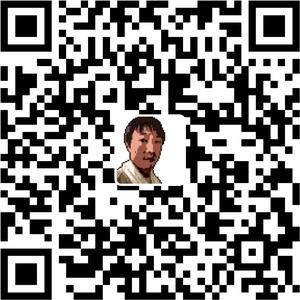“Phantom” Traffic Jams Are Real—And Scientists Know How to Stop Them
A) Traffic jams are a common problem of most big cities, either in developed or in developing countries, but one kind of traffic jams in particular can be especially frustrating. These are generally known as “phantom” traffic jams, in which dense traffic crawls to a halt for no apparent reason at all.
B) “When caught in such a traffic jam, it is common for drivers to assume that there must be an accident, or construction or something,” said Massachusetts Institute of Technology (MIT) computer science professor Berthold Horn. “And then you drive and drive and drive… and there isn’t anything there.”
C) The exact cause of these phantom traffic jams has long remained a mystery. But now, new research has found the cause and researchers may have come up with a solution for this frustrating traffic pattern: maintaining equal spacing between cars on the road, rather than driving so closely behind another vehicle that a collision is likely if that vehicle brakes suddenly.
D) Horn said phantom traffic jams are an emergent property of the flow of vehicles down a highway. A phantom jam begins when a car in dense traffic slows down even slightly, which causes the car behind that vehicle to slow even more—and the slowing action spreads backward through the lane of traffic like a wave, getting worse the farther it spreads. Eventually, the cars far behind are forced to stop completely or risk hitting the slower vehicles ahead—and so the traffic grinds to a halt over nothing, Horn said.
E) Horn has been working on the problem of phantom traffic jams for years, and he has come up with a solution: By splitting the difference between the cars in front and the cars behind, the spacing of cars in a stream of traffic can act as a damper on phantom traffic jams. That is, it can prevent the slow-down effect from being amplified by the cars that follow behind, he said. In essence, each driver would constantly make adjustments to keep their car roughly halfway between the car in front and the car behind.
F) Horn calls this method of vehicle spacing bilateral control, and he said it could be achieved with relatively simple modifications to the adaptive cruise control that many new cars already have. Adaptive cruise control is a driver assistance technology that sets a maximum speed for vehicles and automatically slows the speed of the car when traffic is sensed in front of the vehicle. The technology is also known as autonomous cruise control. Such modifications, Horn said, could help fight phantom jams within a few years, maybe decades before an alternative solution, such as networked self-driving cars, becomes a reality on the roads.
G) Traffic jams are caused by a number of factors, such as roads that are poorly designed or over-capacity, localized factors like city traffic-lighting patterns, and events like accidents and construction. But phantom traffic jams can make all those problems worse, Horn said. And the researchers in the new study have calculated that solving phantom jams could save at least some of the estimated $121 billion per year that traffic jams are estimated to cost the U.S. economy, Horn told Live Science.
H) New research by Horn and MIT postdoctoral associate Liang Wang, published in the journal IEEE Transactions on Intelligent Transportation Systems, shows how bilateral control can fight the problem. The researchers made computer models of real-world traffic conditions, showing how a typical U.S. freeway could benefit from cars using bilateral control. That would be in place when human drivers fail to slow down, thus avoiding tailgating the car in front, Horn said. “Under reasonable conditions today, you might get 1,800 cars per lane per hour throughput (the volume of traffic passing through),” he added. “But with bilateral control, you could almost double that.”
I) The main alternative to increasing traffic throughput per lane has been to build more lanes and more highways, and putting in new roads is very expensive, he said. “If we can increase the throughput on major highways, even if it’s only by 50 percent, that would be a big deal,” Horn said.
J) With the help of engineering students at high schools in Maine, Horn and Wang have also built a robot simulation that shows how bilateral control can suppress phantom traffic jams. Increasing the spacing of vehicles dampens the effect of slowdowns by cars in front of a given car, so that the slowing is not worsened until it becomes a phantom jam, the researchers said.
K) A video from the project shows a train of autonomous robots running along a track without bilateral control; they eventually back up in phantom jams. But when the robots are switched over to bilateral control (by flashing the lights in the room), each autonomous robot tries to keep itself halfway between the robot in front and the one behind; the phantom jams disappear as a result, Horn said.
L) Since starting his research on phantom traffic jams, Horn has learned that schools of fish and flocks of birds and bats use similar spacing strategies to avoid hitting each other while swimming or flying in densely packed groups. In particular, studies of millions of bats emerging at dusk from caves in Southeast Asia showed that each bat used a form of bilateral control to reduce the likelihood of collisions with other bats in the densely packed swarm, Horn said.
M) Unlike bats, birds and fish, however, humans have difficulty judging distances behind them. To address that weakness, Horn is now working with the car company Toyota to enable a form of bilateral control via modifications to existing adaptive cruise control systems, which use forward-facing sensors to judge the distance to the vehicle ahead. The bilateral control approach would include adding rear-facing sensors to determine the distance to the vehicle following a car.
N) But until those systems become standard, human drivers can help reduce phantom traffic jams simply by not following the car in front so closely. As Horn argues, “There’s absolutely no advantage of tailgating the car in front of you.”

